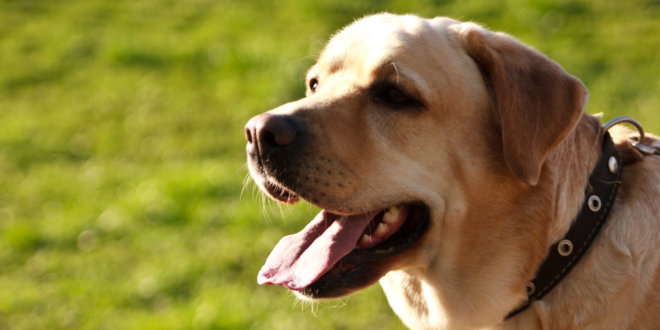Every puppy owner dreams of a well-trained furry friend that listens to commands and behaves appropriately. However, the reality is that training a puppy requires patience, consistency, and determination. The journey to turning your pup into a well-behaved companion may seem daunting, but with the right tools and techniques, it is possible. In this article, we will explore the art of training your puppy on a leash, from the importance of starting early to the most effective training methods. Whether you’re a new puppy owner or a seasoned dog lover, get ready to discover the secrets to a happy and obedient furry friend.
Table of Contents
1. Unleash the Secret to Training Your Puppy
Training your puppy can be a challenging task, but with the right approach and techniques, you can unleash the secret to successful training. Here are some key tips to help you get started:
– Consistency is critical. Establish clear rules and stick to them. This will help your puppy understand what is expected of them and avoid confusion or frustration on both sides.
– Use positive reinforcement. Praise and reward your puppy for good behavior, such as following commands, using the bathroom outside, or being calm and obedient. This will encourage them to repeat these actions in the future.
– Be patient and persistent. Training takes time and effort, and setbacks are normal. Don’t get discouraged if your puppy doesn’t catch on right away or makes mistakes. Keep practicing and reinforcing positive habits.
By following these tips, you can help your puppy develop the skills and behaviors they need to be a happy and well-behaved member of your family. Remember to stay consistent, positive, and patient, and you’ll be on your way to success.
2. Puppy on a Leash – A Comprehensive Guide to Training
Training your puppy to walk calmly on a leash can be a challenge, but with patience and consistency, it is achievable. Here are some tips to help you train your puppy:
1. Start slow: Begin training your puppy in a quiet, familiar environment. This will help them feel less overwhelmed and more comfortable during the training process.
2. Introduce the leash: Show your puppy the leash and let them sniff it. Once they become accustomed to it, attach it to their collar and allow them to walk around with it on.
3. Practice in short sessions: Start with 5-10 minute training sessions and gradually increase the time as your puppy becomes more comfortable with the leash.
4. Reward good behavior: Use positive reinforcement to encourage your puppy to walk calmly on the leash. Whenever they walk nicely, be sure to praise them and give them a treat.
5. Correct unwanted behavior: If your puppy pulls on the leash or becomes distracted, gently and calmly stop walking. Wait until they refocus their attention on you and then resume walking.
Remember that leash training takes time and patience. Don’t get discouraged if your puppy doesn’t learn quickly, keep practicing and rewarding good behavior. With consistency and determination, your puppy will be walking calmly on a leash in no time.
3. The Importance of Teaching Your Pup to Walk on a Leash
When it comes to taking your pup on a walk, many pet owners tend to underestimate the importance of leash training. Teaching your furry friend to walk on a leash comes with several benefits that make this training worthwhile. Below are some of the reasons you should consider teaching your pup to walk on a leash.
- Prevents Accidents: By training your pup to walk on a leash, you are able to prevent accidents such as your dog getting loose, chasing after other animals, or running away. Having control over your pet ensures that they remain safe during walks.
- Improves Behavior: A dog that is leash trained is usually better behaved. It is easier to communicate with your pup when they are on a leash. This helps to decrease distractions and helps your pup focus on you while walking.
- Encourages Exercise: Regular walks provide your pup with much-needed exercise. This promotes a healthy lifestyle and helps keep your furry friend in shape, mentally and physically. Walking on a leash allows you to exercise with your pup while keeping them under control.
Without proper leash training, walking your dog can turn into a tedious and frustrating experience. By teaching your pup to walk on a leash, you’ll enjoy walks together and experience a closer bond with your furry friend. Remember, leash training is an essential part of your pup’s early development, and the efforts you put in will pay off in the long run.
4. From Pulling to Heeling: Mastering the Art of Leash Training
Mastering the art of leash training can be a daunting task, especially if you’ve got a dog that likes to pull. However, there’s no need to despair because with a little patience and perseverance, you can teach your dog to walk on a leash without pulling. Here are some tips to get you started.
First, it’s important to choose the right leash and collar. Your dog’s collar should fit snugly around its neck but not be too tight. If your dog is a puller, consider using a front-clip harness or head halter. These tools will give you greater control over your dog’s movements, making it easier for you to guide it along on walks.
Next, start by practicing in a quiet, low-distraction environment, such as your backyard or a quiet street. Use treats and positive reinforcement to encourage your dog to walk calmly on the leash. Gradually increase the level of distraction as your dog improves, and always be patient and consistent with your training. Remember, mastering the art of leash training takes time and practice, but with a little effort, your dog can become a well-behaved walking companion.
5. Top Tips for Effective Puppy Leash Training
Training your puppy to walk on a leash is a crucial part of their growth and development. Not only does it teach them obedience and discipline, but it also helps them stay safe when out in public. Here are some top tips for leash training your puppy effectively:
- Start Slowly: Rather than jumping right into walks, start by letting your puppy get used to the leash indoors or in your backyard. This will help them get comfortable with the feeling of being on a leash before introducing them to new sights and sounds.
- Use Positive Reinforcement: Reward your puppy with lots of treats and praise when they’re walking nicely on the leash. This will help them associate good behavior with positive outcomes.
- Keep Walks Short: Puppies have short attention spans, so try to keep walks short and focused. This will help them stay engaged and avoid getting too tired or bored.
- Be Consistent: Consistency is key when it comes to leash training. Make sure to use the same commands and techniques every time you walk your puppy to help them understand what’s expected of them.
Remember, leash training takes patience and persistence. Keep at it, stay positive, and before you know it, your puppy will be walking on a leash like a pro.
Congratulations on mastering the delicate art of training a puppy on a leash! With patience, determination, and plenty of treats, you have given your four-legged companion the gift of going places with you in a safe and controlled manner. It may have taken a few frustrating moments to reach this point, but the rewards of seeing your pup happy and secure on walks will surely be worth the effort!
 Treat For Dog – Brain Training for Dogs, Dog Training & Obedience Discover Treat For Dog and get your pup on the path to smarter, happier, and healthier living with brain training for dogs.
Treat For Dog – Brain Training for Dogs, Dog Training & Obedience Discover Treat For Dog and get your pup on the path to smarter, happier, and healthier living with brain training for dogs.




